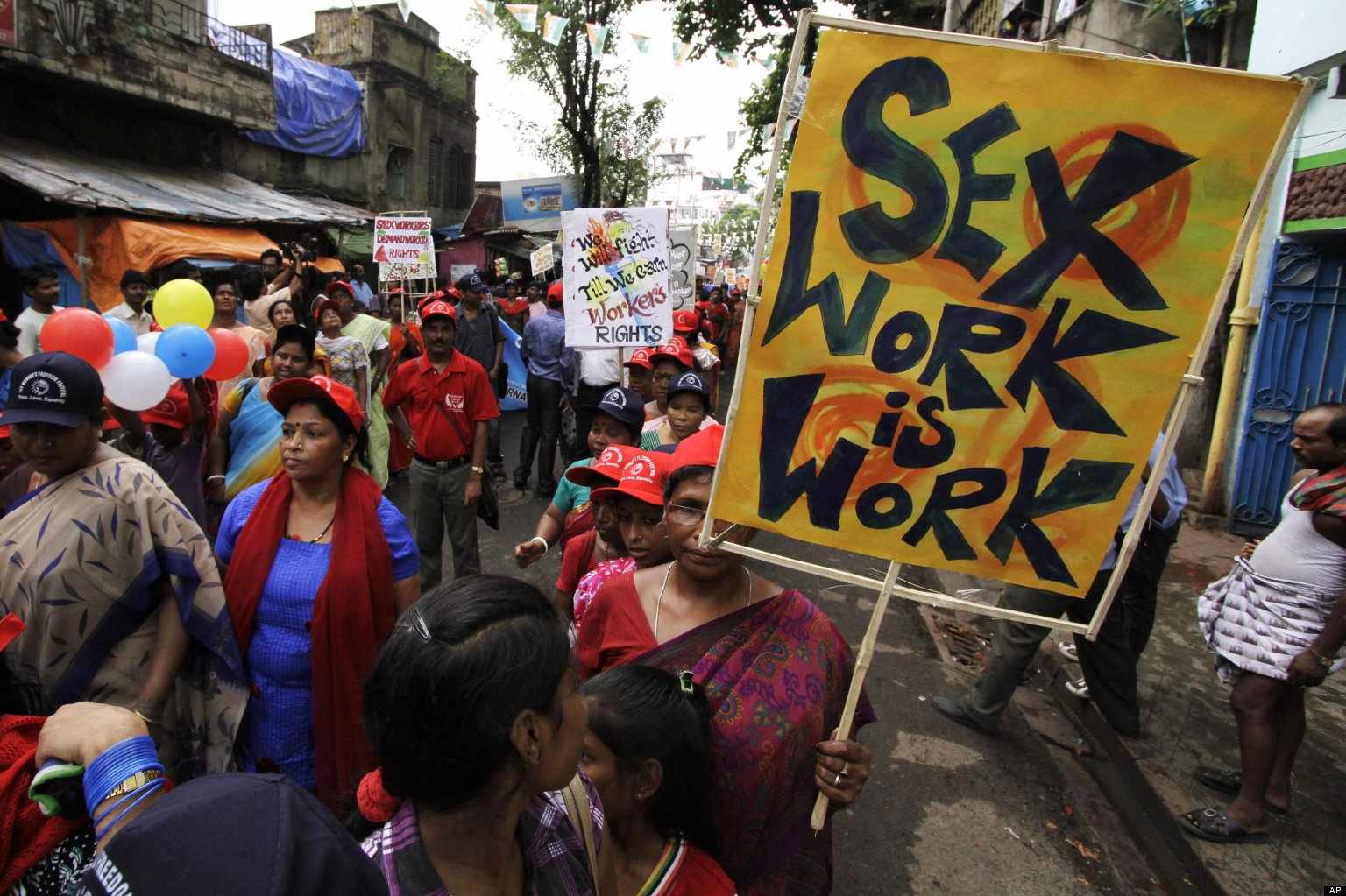Sex work, status of women and the Nordic Model

Abhishek is a communications professional with a finance and liberal arts background, currently associated with Dr. Reddy’s Foundation.
Recently, I attended a forum at a reputed university. One of the keynote speakers, a gender activist, was demanding for complete legalization of sex-work on the one hand. On the other, she was questioning the low numbers of women and transgender people in eminent universities across India. Listening to her emotional appeal, for a moment though, it feels like complete legalization of sex work would improve the living conditions of the sex workers (the majority of whom are women), greater opportunities for women to pursue good education would also enhance their status. But, both might not go hand in hand.
Sex work in India
Although sex work in India is not illegal, it is restrictive in terms of the sex trade. Immoral Traffic (Prevention) Act, 1956, governs sex work in India. Trade aspects like maintaining brothels or soliciting customers are considered illegal. Sex work within 200 meters of any public place, including hotels, is a punishable offense. These clauses of the Act imply that if any woman wants to practice it legally, they have to do it alone. Also, as it can’t be in close vicinity of a public place, so they should carry it out on a private premise, maybe in some corner of a city. Two important takeaways from these implications are: [1] As brothels and soliciting customers is punishable, brothel networks and sex trafficking should be very less. [2] As it should be carried alone and in some corner of a city, the risk of abuse and exploitation is high.
The law didn’t see much success concerning the first point. India is home to some of the largest red-light areas in Asia, like Sonagachi, Kamathipura, and GB Road. According to an NCRB report from 2016 (latest available), 20,000 women and children were trafficked in this year alone, and the number is 25% up compared to 2015. While three in five persons trafficked in 2016 were children below 18 years, trafficking for prostitution was the second primary purpose after human trafficking for forced labor. The number might be deficient because most of these activities are carried secretively, and victims don’t approach police because of fear of traffickers and lack of awareness about the law. The law limiting such activities facilitates its continuation in isolation and away from public properties, adds strength to the second point.
The places where sex work is carried out are secretive and secluded because carrying it out as any other professional business is punishable. This seclusion from facilities like access to information, hospitals, and police stations increases the risks of being abused and contracting sexually transmitted diseases. The pathetic life of sex workers in India is detailed in the report Status of sex workers in India. It is apparent that clauses of this law that restrict sex trade didn’t have much success in reducing the flesh trade or the attacks on sex workers. In this context, should sex trade be legalized entirely and allowed to be carried out like any other profession? The data from countries where prostitution is legalized isn’t encouraging enough taking such a decision.
A cross-country comparison
A study carried out in 150 countries found that countries with legalized prostitution experienced higher trafficking inflows. This is bound to happen because legalization increases the market size and acts as an incentive for organizations that profit from sex trafficking. A set of interviews with prostitute women in the Netherlands revealed that legalization attracts foreign women who come and work illegally in the Netherlands. In addition to these, data from New Zealand says that legalization has not reduced stigma and harassment by the general public. Nothing much changed in disclosing their occupation as a sex worker before and after the decriminalization. If this stigma doesn’t reduce, the probability of sex workers reporting incidents of exploitation or abuse is very low. So, legalization doesn’t do much to curb sex trafficking and abuse.
Lifting the clauses that push it underground might mean better access to information, hospitals, and police and a reduction in sexually transmitted diseases and violence. However, I didn’t find much evidence to support this claim conclusively. Report of the Prostitution Law Review Committee of New Zealand offers some insight into this. The majority of sex workers interviewed felt that only a little change has occurred with regard to violence. At the same time, a significant minority thought that there had been an improvement since the enactment of the law. Overall as the outcomes didn’t change much on any front, legalization/decriminalization might not be a welcome idea. In addition to the greater probability of not having any significant impact, such an act might open up another problem on the front of women’s status.
Legalization of prostitution
In an industry where most of the women are forced into, the work can’t be called or treated as a dignified form of labour. So, legalizing it will only be legalizing the violence and exploitation that happens. Even considering those few who enter this industry willingly or for making some money to survive, legalization will objectify the body of a woman. Men who are usually the buyers of sex will learn that women are commodities for sexual gratification. Moreover, it also makes better education and employment of women take a back seat because of this alternative career. Such mind-sets degrade the status of women in a society and put a question on all the efforts undertaken towards empowering women. If the existing law doesn’t do much and nor does legalization/decriminalization, what could be the solution?
The Nordic model
The Nordic Model is an approach, pioneered in Sweden, which criminalizes the act of buying sex but legalizes the act of selling sex. When the buyer is afraid of the criminal proceedings, the demand falls. A fall in demand makes the industry less attractive for new entrants and also existing entities that used to otherwise profit from this business. The sale being legal means that women can seek legal assistance if abused. Earlier, as the sale in itself was criminal, she could have faced a fair trial even if she was forced into it. Two more essential pillars of this approach are: [1] helping women to get out of prostitution by providing help and support in housing, legal advice, psychological support, education, training, employment and childcare, and [2] running awareness campaigns to inform the public about the new law. The evidence from Sweden and Norway says that the market for prostitution has declined after implementing this law.
In a country like India, where sex workers fear coming out in the open to seek legal assistance because of the stigma associated, the support from this section to a law like this is questionable. However, measures to significantly curb the demand like stricter punishments and open court trials for buyers or attempted buyers would reduce the demand even more. To tackle all the ills associated with sex work, the Nordic Model might be worth trying.
Featured Image Credits: One future collective








